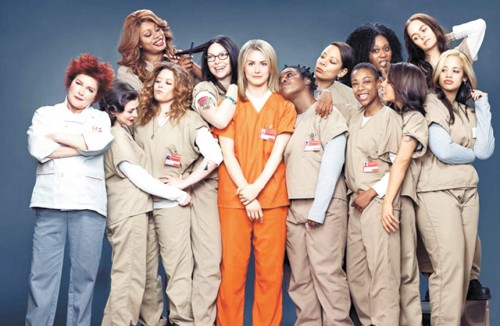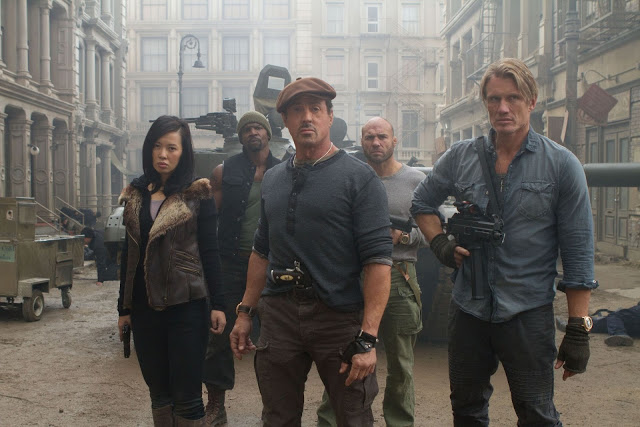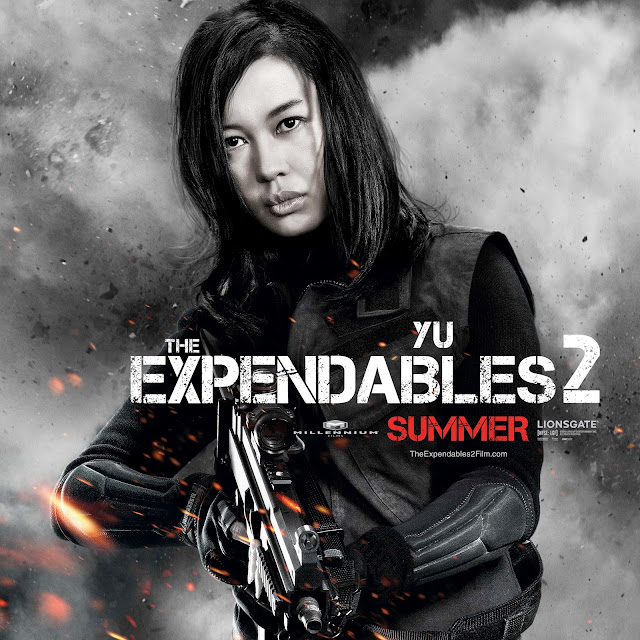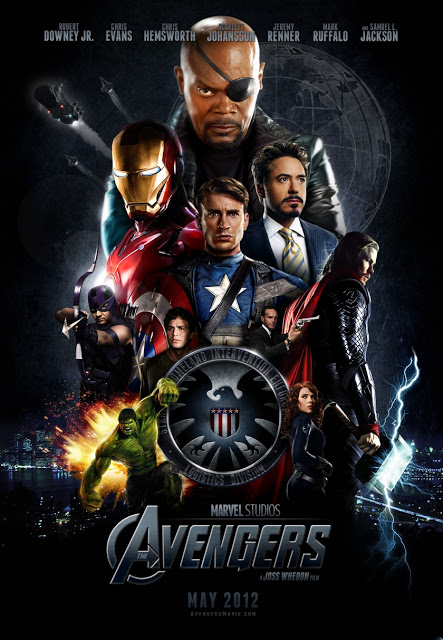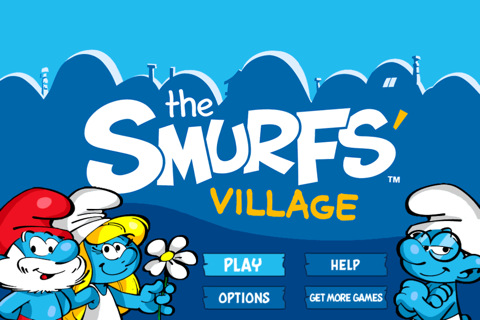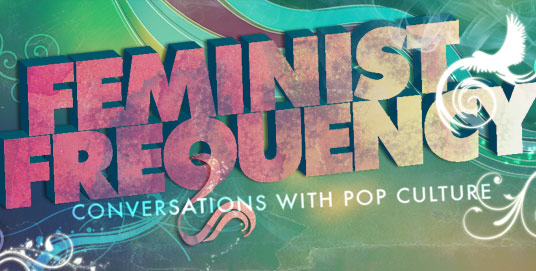This is a guest post by Brigit McCone.
Professional female comedians are still asked in interview after interview whether women are funny. The usual response is a defensive list of funny women. But proof of funny women is no proof that women are funny, thanks to the dreaded Smurfette Principle. The “Smurfette Principle” dictates that women who succeed in male fields must be interpreted as a) unique and isolated, and b) a variation on a male original. Far more than a common trend in cartoons and superhero teams, the Smurfette Principle is an ingrained interpretative framework that limits female achievement to a model for male imitation, rather than an argument for female inclusion. In comedy, “Smurfette Syndrome” is a bias that asks whether individual women are “as funny as men,” rather than assessing women’s collective contribution as creators of comedy genres. Such as…
[youtube_sc url=”https://www.youtube.com/watch?v=uGj5CnPJ3QA”]
Alice Guy’s irresistible piano syncs uncannily with Ray Charles
The Comic Novel
Murasaki Shikibu not only wrote the world’s first novel in the 11th century with The Tale of Genji, she included hefty doses of humor amidst all the karmic heartbreak. Whether revealing the bulbous nose of the mysterious Safflower Princess behind the silk screen, or working out the interpersonal dramas of a womanizer’s harem, Lady Murasaki wielded realism to puncture cliché. Murasaki Shikibu, along with Sei Shonagon (“the most natural wit in the history of Japanese literature”) and fiery, erotic poetess Ono no Komachi, became literary pioneers by accident: they were adopted as models for Japanese literature because their male contemporaries wrote in stilted Chinese to show intellectual superiority. As men switched to Japanese, women writers were squeezed out, leaving only their early classics.
On film and TV: Kozaburo Yoshimura’s 1951 adaptation of The Tale of Genji is a recognized classic. Peter Greenaway’s film inspired by Shonagon’s The Pillow Book reinvents it as a modern tale of a Japanese woman and an older Japanese man sexually servicing Ewan McGregor. A memorable riff on Shikibu’s “Princess Safflower” gag is featured in Who Framed Roger Rabbit?
Christian Comedy
Drama was strongly condemned by the Fathers of the early Christian church as immoral, in works like Tertullian’s De Spectaculis. It was a 10th century nun, Hrotsvit of Gandersheim, who revived the tradition of playwriting by arguing that it could have a moral function. Hrotsvit became the first recognized playwright of medieval Europe, adapting the popular sex comedies of the ancient Roman Terence into an entirely new genre: virgin martyr sex comedy. Chuckle as Dulcitius attempts to ravish the virgins, but ends up humping a sooty pot instead! Giggle as soldiers attempt to strip the virgins, but discover their robes are stuck on! Then feel sorta bad when the virgins get burned alive and shot with arrows anyway. Martyrdom replaced marriage as the culmination of a female empowerment fantasy that began with immunity to rape. The subtle relationship between hermit and prostitute in Hrotsvit’s Paphnutius inspired novelist Anatole France and Oscar Wilde, while Hrotsvit’s Callimachus is identified as one of the sources for Shakespeare’s Romeo and Juliet. Hrotsvit, however, gained acceptance by self-Smurfette: presenting her wit as an exceptional, divine gift contrasted with usual female witlessness.
On film and TV: Thais, a sexed-up rewrite of Paphnutius by Anatole France, was adapted into a faithful American silent film, and loosely inspired the only surviving Italian futurist film. Jane the Virgin is arguably a modern virgin martyr sex comedy.
Cabaret
In the 17th century, blacksmith’s daughter and shrine maiden Izumo no Okuni created kabuki as a mixture of cross-dressing sketches, sexual innuendo, musical performance, and titillating sensuality. It moved into the teahouses of the red-light district, allowing patrons to sit and drink while watching the show; that is, kabuki originally met the definition of cabaret. For empowering sex workers with social visibility and subversive self-expression, the Japanese authorities banned women from the stage to be replaced by all-male kabuki. Japan’s all-female Takarazuka revue, and witty writer-performers like Mae West and Gypsy Rose Lee in the Western cabaret/vaudeville tradition, carry on the legacy. Straight male comics often struggle to cross over into the diva humor of cabaret, yet it is female comic capability that is judged according to the masculine norms of stand-up.
On film and TV: Mae West defied ageism to become a Hollywood sex symbol in her late 30s, reportedly rescuing Paramount Studios from bankruptcy with She Done Him Wrong. The decadent culture of Weimar cabaret is depicted in the contemporary The Blue Angel, which introduced Marlene Dietrich, and the later musical Cabaret.
[youtube_sc url=”https://www.youtube.com/watch?v=FJS670okmZc”]
Mae West’s anarchic comedy of sex
Romantic Comedy
I seem to regularly rant on Bitch Flicks about Jane Austen’s role in defining romcom, so I’ll be brief: the meet-cute, the bickering couple who mirror each other, the misunderstandings, public humiliation and sacrificed ego – this is the template of Pride and Prejudice. Though her achievement is trivialized by treating “romcom” as a gendered slur, Austen’s formula is actually fundamental to the male romance of films like Fight Club, as well as classic comedies like Some Like It Hot.
On film and TV: There have been numerous screen adaptations of Pride and Prejudice, as well as updates such as Bridget Jones’ Diary, Bride and Prejudice and The Lizzie Bennet Diaries.
Parody Film
“If the future development of motion pictures had been foreseen at this time, I should never have obtained his consent. My youth, my inexperience, my sex, all conspired against me” is how Alice Guy Blaché described being given her start in directing by Gaumont because no one else saw the potential of film: Alice Guy invented the close-up, she hand-painted color film in 1897, experimented with synchronized sound in 1906 and made over 1,000 films, owning her own studio (Solax). She made action films with swashbuckling female leads and boat explosions, but makes this list for creating the first parody films. Although the first comedy film is the Lumiere brothers’ The Sprinkler Sprinkled, about a sprinkler… who gets sprinkled (it predates the “don’t name it after the punchline” technique), it was Alice Guy who parodied the special effects films of George Melies with 1898 cross-dressing farce At the Hypnotist’s and the earnest scientific documentaries of her male peers with 1900 botched-surgery farce Surgery at the Turn of the Century. She brought in slapstick domestic strife with 1902’s An Untimely Intrusion and explored sexual harassment through comic role reversal in The Consequences of Feminism. Mabel Normand was an early slapstick star who directed her own films. Studio boss Mack Sennett (Keystone) is on record saying that Charlie Chaplin “learned [to direct] from Mabel Normand.” Neither Normand nor Alice Guy is regularly celebrated among cinema’s comic pioneers.
On film and TV: Though many of Guy’s films are now lost, many more can be viewed free online.
Stand-up Comedy
It’s difficult to say when the comic monologues of vaudeville transitioned into recognizably modern stand-up, but probably while Moms Mabley was headlining at the Apollo. To understand her contribution, witness the comics who acknowledge her influence: Flip Wilson, Richard Pryor, Joan Rivers, Eddie Murphy, Whoopi Goldberg, Chris Rock. Mabley exploited the freedom of old ladies to speak their mind, to confront taboos like alcoholism, poverty, racism, infidelity and sexual double standards, defining the comedian’s role as “truth teller” with a persona modeled on her grandmother, a former slave. Growing up Black and gay in 19th century North Carolina, Moms was bulletproof to hecklers before she ever hit a stage. Stand-up and fringe theater offer creative freedom to the minority perspective of queer comediennes of color, from the wild parodies of the Native American Spiderwoman Theater to figures like Wanda Sykes and Margaret Cho today. Mabley is sometimes called the “first female stand-up,” but still isn’t widely acknowledged for pioneering the modern art of stand-up itself, despite Bill Cosby admitting that “she opened that door for a different kind of solo” (Cosby should know; he was quite the groundbreaking comic before moving on to beloved sitcoms and sex crime allegations).
On film and TV: A young Moms has a brief cameo opposite Paul Robeson in The Emperor Jones, rocking a tuxedo in 1933, before starring in 1948’s Boarding House Blues and 1974’s Amazing Grace. Whoopi Goldberg made a documentary about Mabley. You can find Mabley’s later comedy routines, for the Smother Brothers Comedy Hour and the Ed Sullivan Show, on YouTube.
[youtube_sc url=”https://www.youtube.com/watch?v=vLg1QzdAdLo”]
When Moms jokes about being forced into marriage, it’s because she was
Improv Sketch Comedy
The comic improv created in the post-war University of Chicago shifted the culture of comedy from stand-ups telling jokes to actors performing satirical sketches. This new style was introduced to the world by comedy duo “Nichols & May,” where Elaine May’s role in creating the skits was equal to Mike Nichols’. The sharpness of their satire and the danger from their live improvs brought improv skits mainstream, like a new art of comedy jazz. You might say that without Elaine May and Mike Nichols, there would be no Steve Martin, no Lily Tomlin, no Martin Short, no Saturday Night Live. In fact, Vanity Fair did say that.
On film and TV: Many classic “Nichols & May” sketches are available on YouTube. Elaine May brought geeky charm and Jewish humor to the romcom by writing, directing and starring in 1971’s A New Leaf, six years before Woody Allen’s Annie Hall. She was Oscar-nominated for writing Heaven Can Wait and Primary Colors, wrote The Birdcage and was an uncredited writer on Tootsie, but never got another chance to direct after Ishtar flopped (despite the film’s bad reputation being exaggerated).
Sitcoms
The first sitcom on network television, 1947’s Mary Kay and Johnny depicted Johnny and Mary Kay Stearns’ marriage, of which Variety said “much of the show’s charm is traceable directly to the femme half of the team.” The couple that defined the sitcom’s template was Lucille Ball and Desi Arnaz. Ball and Arnaz created “more tropes than anything on television before or since”--they filmed the episodes in front of a live audience using multiple cameras, a unique format at the time, making the first reruns possible and keeping I Love Lucy in syndication worldwide. Ball and Arnaz’s Desilu studios also produced Star Trek. After breaking up with Arnaz, Lucille proved she could do it solo with The Lucy Show. Jennifer Saunders’ Absolutely Fabulous, Roseanne Barr’s Roseanne (which launched Joss Whedon and Judd Apatow) and Tina Fey’s 30 Rock followed in Lucille Ball’s sitcomical footsteps.
On film and TV: I Love Lucy has many episodes and classic scenes available on YouTube.
[youtube_sc url=”https://www.youtube.com/watch?v=kukhLITAD_w”]
Lucille Ball defining the tropes of TV humor
Supernatural Action Romantic Comedy (SARCom)
A supernaturally strong girl hangs out with her sarcastic, quipping gang – including bitchy golddigger and sweet, motherly one – while carrying on a feud/flirtation with her supernaturally strong, shapeshifting love interest, being pined over by a more impulsive, supernaturally strong shapeshifter, and fighting off demons-of-the-week and sexual harassers. If you guessed Joss Whedon’s Buffy the Vampire Slayer you’d be right, but if you guessed Rumiko Takahashi’s Ranma 1/2 you’d be a decade earlier. Today’s explosion of sarcastic, bickering romcoms with supernatural martial arts was fresh when Takahashi developed it with 1987’s Ranma 1/2, and her later Inuyasha. Takahashi’s immense success at blending male and female genres, creating entertainment that offers integrated empowerment to both sexes, has been Smurfetted in Japan, segregating female mangakas into a female genre (shoujo).
On film and TV: both Ranma 1/2 and Inuyasha have been adapted into anime.
So that is the incredible true story of how women created the culture of modern comedy without being funny. “The Smurfette Principle” is still used to isolate female achievement, from cartoons to comedy clubs. We can only laugh.
Brigit McCone is grateful to the anarchic Rose Lawless and Emma Pearson’s Crash Test Cabaret for assisting at the comical birth of her cabaret alter-ego Voluptua von Temptitillatrix. Her hobbies include doodling and she will be linking to this article if anyone ever asks that bloody question about funny women again.






